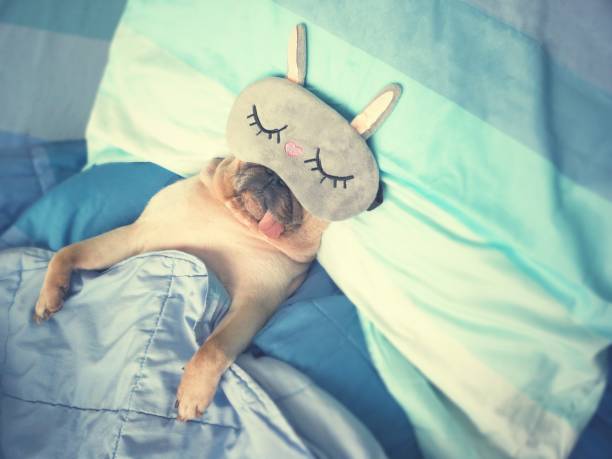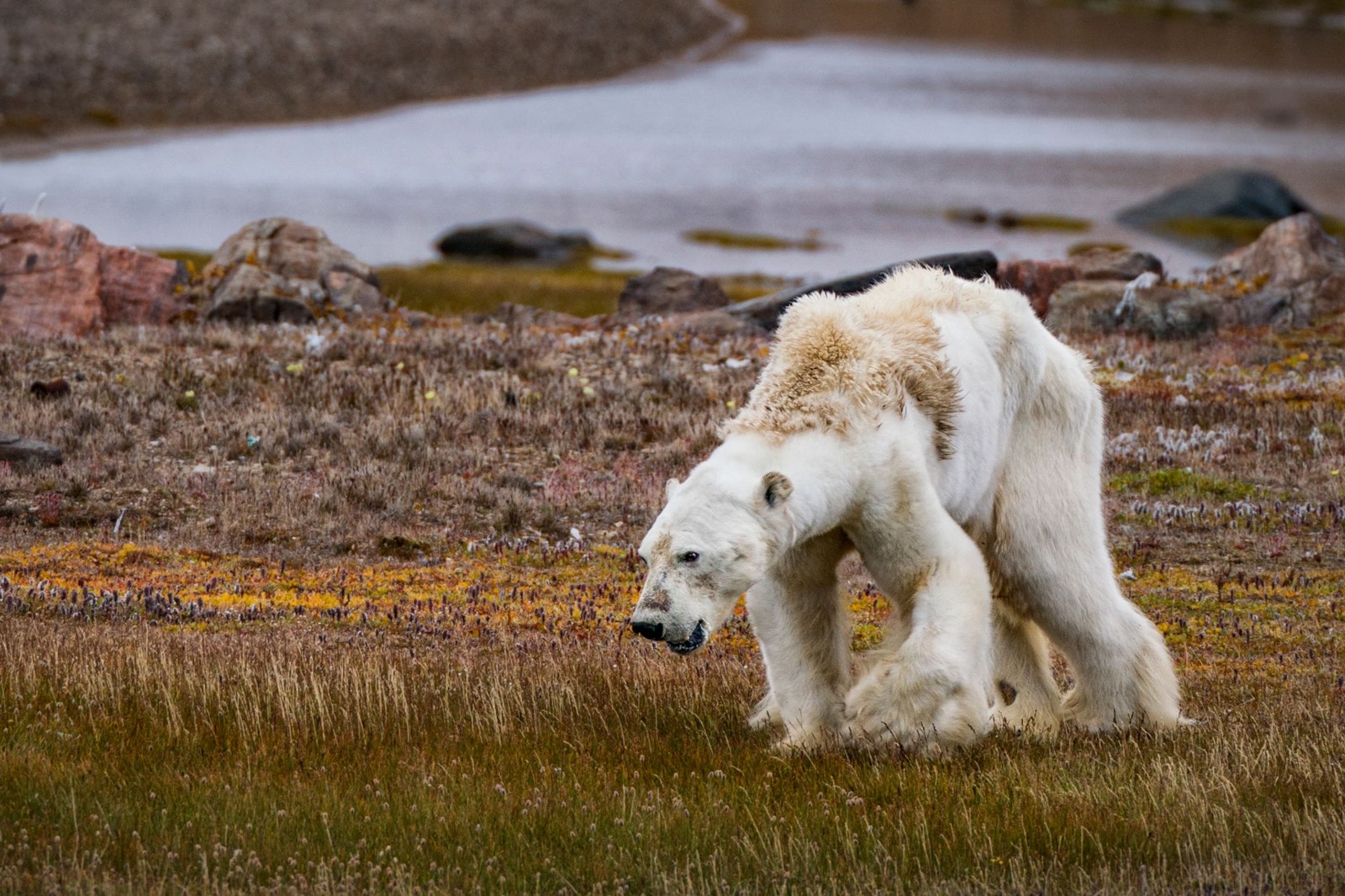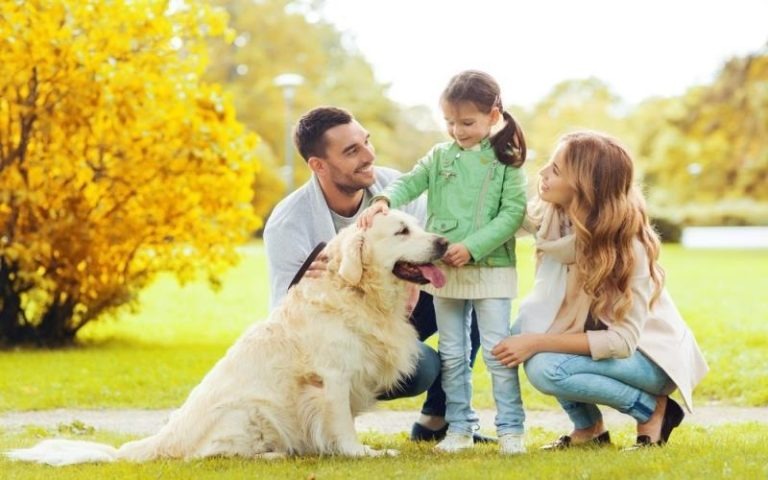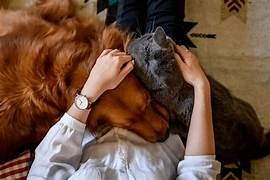
Do Pets Dream About Us? A Look Inside Their Sleeping Brains
Have you ever wondered what your pet dreams about while they sleep? Explore the fascinating science behind animal dreams and whether our pets could be dreaming about their humans.
🐶 Pet Star
24 min read · 1, Feb 2025

Introduction: The Mystery of Pet Dreams
We’ve all seen our pets twitching, pawing, or even “running” in their sleep. It’s a curious sight, leaving us wondering: Do pets dream about us? As humans, we know that dreams are a natural part of our sleep cycle, but do our beloved companions experience the same phenomenon? What goes on inside their sleeping brains, and are they imagining us in their dreams?
In this article, we’ll take a deep dive into the science of pet sleep and dreams. While it’s hard to say for sure what our pets dream about, research gives us some fascinating clues. Could our pets be dreaming of their daily adventures with us, or is there something else at play in the world of their subconscious?
1. The Sleep Cycle: Understanding How Pets Sleep
Before we can explore whether our pets dream, we first need to understand how they sleep. The sleep cycle of pets is similar to ours, but there are some key differences that make their sleep patterns unique.
Sleep Stages in Pets
Like humans, pets experience different stages of sleep, including Rapid Eye Movement (REM) sleep, where most dreaming occurs. REM sleep is a stage of sleep characterized by rapid eye movement, muscle relaxation, and vivid dreaming. In fact, it’s during this phase that we see pets exhibiting behaviors like twitching or running in their sleep. This is the most likely time that they are experiencing dreams.
Dogs and cats spend a large portion of their sleep in REM, much like humans. In fact, a study has shown that dogs spend approximately 12-14 hours per day sleeping, with a significant portion of that time being REM sleep. Cats, being more nocturnal, sleep even more, around 16-18 hours per day. The higher amount of REM sleep suggests that pets, particularly dogs and cats, experience a significant amount of dreaming.
Differences in Pet Sleep Cycles
Pets’ sleep cycles tend to be shorter than ours. While a human sleep cycle lasts about 90 minutes, a dog’s sleep cycle lasts only 15-20 minutes, and a cat’s even shorter. This means that pets likely enter REM sleep more frequently than we do, providing more opportunities for dreaming. With so much time spent in REM sleep, it stands to reason that our pets could be dreaming about something—perhaps even us.
2. What Are Pets Dreaming About?
Now that we know pets dream, the big question remains: What are they dreaming about? While it’s impossible to know for certain, we can make educated guesses based on their behavior and our understanding of how dreams work in animals.
Dreams About Daily Life
Given that pets are highly attuned to their environment and experiences, it’s likely that their dreams reflect their daily lives. A dog might dream about chasing a ball in the park or going for a walk with you. A cat could be dreaming about stalking a bird or playing with a favorite toy. These dreams are most likely fragments of their waking experiences, replayed in their minds during REM sleep.
Researchers believe that dreams serve to process and consolidate memories. So, it’s possible that your pet’s dreams are related to their most recent activities or interactions. If they spent the day playing with you or exploring new places, these events might be replayed in their sleep, forming the content of their dreams.
Do Pets Dream About Their Humans?
Since pets spend so much time with their humans, it’s only natural to wonder whether they dream about us. Dogs and cats are social animals, and they form strong emotional bonds with their owners. It’s entirely possible that their dreams include memories of interactions with their favorite humans—whether it’s cuddling on the couch, playing together, or simply being in each other’s company.
Research on dog behavior suggests that they form attachment bonds similar to those of children with their parents. This attachment likely influences their dreams. If your dog or cat is particularly attached to you, there’s a good chance they could dream about you, just as you might dream about your loved ones.
3. The Science of Animal Dreams: What the Experts Say
While there’s still much to learn about the world of pet dreams, there is some scientific research that sheds light on the subject. A study conducted by neuroscientist Matthew Wilson at MIT provided some groundbreaking insights into animal dreams. Wilson’s team studied rats navigating mazes, and the researchers found that when the rats were asleep, their brain activity mimicked the patterns they had while running through the maze. This suggested that the rats were dreaming about their experiences.
This finding supports the theory that animals, like rats, dogs, and cats, might dream about their real-life experiences. If rats can dream about navigating mazes, it stands to reason that dogs and cats might dream about their own daily activities, including their interactions with their humans.
Are Pets’ Dreams Similar to Ours?
Though pets experience dreams, their dreams may be quite different from ours. Humans often dream in complex, emotional narratives, while animals might have more straightforward dreams focused on their immediate sensory experiences. For instance, a dog’s dream might consist of running through a field or playing with a favorite toy, with little to no narrative structure.
That being said, it’s not outside the realm of possibility that pets’ dreams could involve emotional content, such as experiencing feelings of love, joy, or fear. After all, animals are capable of complex emotions, and it’s possible that these emotions play a role in their dreams as well.
4. Signs Your Pet Is Dreaming About You
Have you ever noticed your pet twitching or vocalizing in their sleep? These are signs that they are likely in REM sleep and may be dreaming. But can we tell if our pets are dreaming about us specifically? Here are a few signs to look for:
Twitching and Paw Movements
When your pet twitches their paws or legs, it’s a sign that they are likely dreaming about movement—like running, playing, or chasing. If they’re especially close to you, it’s possible that their dream involves running toward you or playing with you.
Vocalizations
Dogs and cats sometimes bark, whine, or meow in their sleep. If your pet is vocalizing while they’re asleep, it could be a sign that they’re reliving an interaction with you, such as playing or receiving attention.
Eye Movements and Rapid Breathing
Rapid eye movement (REM) is one of the key indicators that a pet is dreaming. If you notice your pet’s eyes flickering under their closed eyelids or their breathing becoming irregular, they are likely deep into a dream. These signs suggest that your pet is fully engaged in the dream state and may be processing their experiences with you.
Conclusion: The Fascinating World of Pet Dreams
While we may never know exactly what our pets dream about, it’s clear that their sleep cycles and brain activity suggest that they do, indeed, experience dreams. Given their strong bond with us, it’s entirely plausible that our pets dream about their daily interactions with us. Whether they’re replaying their favorite playtime or imagining a cozy cuddle, our pets’ dreams are likely a reflection of their lives with us.
The next time you see your dog’s paws twitch or hear your cat meow in her sleep, remember: they might just be dreaming about you!
Q&A: The Truth Behind Pet Dreams
Q: Can pets really dream?
A: Yes! Pets, like humans, experience different stages of sleep, including REM sleep, where dreaming occurs. During this phase, pets exhibit behaviors like twitching or running, which suggests they are indeed dreaming.
Q: Do pets dream about us specifically?
A: While we can’t know for sure, it’s likely that pets dream about their interactions with their humans. Since pets form strong emotional bonds with us, their dreams may involve activities like playing, cuddling, or simply being with their owners.
Q: How can I tell if my pet is dreaming?
A: Look for signs like twitching paws, vocalizations, rapid eye movements, and irregular breathing. These are indicators that your pet is in REM sleep, the stage where dreaming occurs.
Q: Do pets’ dreams involve complex stories like ours?
A: It’s possible that pets experience simpler dreams, focused on physical sensations and interactions. While our dreams may involve complex narratives, pets’ dreams may be more sensory and action-based.
Q: Can pets dream about past experiences?
A: Yes! Research suggests that pets may dream about their daily activities, including their experiences with their humans. This means that your pet could be reliving moments from their day while they sleep.
Similar Articles
Find more relatable content in similar Articles

How Climate Change Affects Wild and Domestic Animals...
Climate change is dramatically.. Read More

The Growing Trend of Therapy and Emotional Support Ani..
Exploring the remarkable rise .. Read More

How Pets Strengthen Family Bonds...
Pets are more than just compan.. Read More

Pets and Mental Health: The Science Behind Emotional H..
Discover the profound impact o.. Read More
Explore Other Categories
© 2024 Copyrights by rPets. All Rights Reserved.